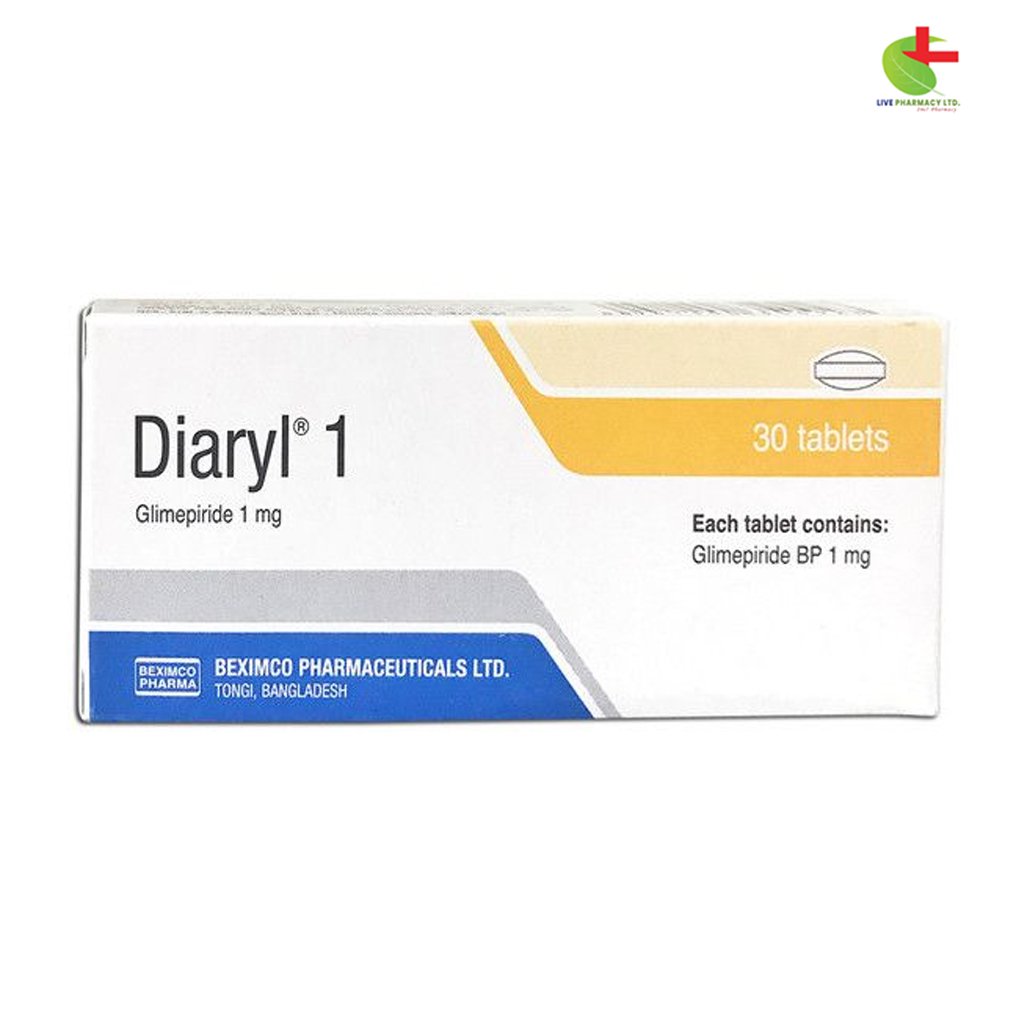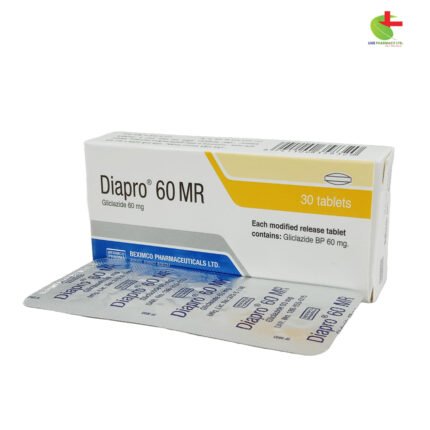Diaryl 1
60.00৳ Strip
- Diaryl is used to manage Type II diabetes mellitus when diet and exercise alone are insufficient.
- Contains Glimepiride, a sulfonylurea that lowers blood glucose by stimulating insulin release from pancreatic cells.
- Can be used alone or with metformin or insulin.
- Requires monitoring for hypoglycemia and dosage adjustments based on individual needs.
 Brand
Brand
|
Beximco Pharmaceuticals Ltd |
|---|---|
 Generics
Generics
|
Glimepiride |
 Type
Type
|
Tablet |
0
People watching this product now!
Description
Indications
- Diaryl is prescribed to manage Type II diabetes mellitus (NIDDM) as an adjunct to diet and exercise for patients whose blood glucose levels are not adequately controlled by lifestyle changes alone.
- It can be used alongside metformin when diet, exercise, or either medication alone fails to achieve proper glycemic control.
- Diaryl is also indicated for use in combination with insulin to manage blood glucose levels in patients who have not achieved control through diet, exercise, or oral hypoglycemic agents.
- Note: Combining Diaryl with insulin may increase the risk of hypoglycemia.
Pharmacology
- Glimepiride, the active ingredient in Diaryl, is a sulfonylurea that lowers blood glucose levels by stimulating insulin release from functioning pancreatic beta cells.
- It enhances insulin sensitivity and glucose uptake in peripheral tissues, reduces basal hepatic glucose production, and maintains its hypoglycemic effect for up to 24 hours in non-fasting diabetic patients.
Dosage
- Initial Dose: Start with 1 mg daily, with potential gradual increases based on blood glucose monitoring: 1 mg → 2 mg → 3 mg → 4 mg → 6 mg.
- Maintenance Dose: Typically ranges from 1 to 4 mg daily for patients with well-controlled diabetes.
- Administration: Take Diaryl with a substantial meal. A single daily dose is usually sufficient. Do not skip meals after taking the medication.
- Adjustment: Dose may need adjustment based on changes in lifestyle, weight, or blood glucose levels to avoid hypoglycemia.
Administration
Swallow Diaryl tablets with a sufficient amount of liquid.
Interaction
- Increased Hypoglycemic Effect: ACE inhibitors, aminosalicylic acid, anabolic steroids, azapropazone, chloramphenicol, and others.
- Reduced Hypoglycemic Effect: Acetazolamide, barbiturates, corticosteroids, and others.
- Unpredictable Effects: Alcohol and certain medications may unpredictably affect Diaryl’s efficacy.
Contraindications
- Not suitable for Type I diabetes, diabetic ketoacidosis, or diabetic coma.
- Avoid in patients with hypersensitivity to Glimepiride, severe hepatic dysfunction, or severe renal impairment.
Side Effects
- Common: Hypoglycemia, temporary vision issues, nausea, vomiting, diarrhea, abdominal pain, urticaria, and low blood pressure.
Pregnancy & Lactation
- Pregnancy: Diaryl is contraindicated; switch to insulin if planning to become pregnant.
- Lactation: Not recommended during breastfeeding; consider switching or discontinuing breastfeeding.
Precautions & Warnings
- Monitoring: Increased risk of hypoglycemia in the initial treatment period requires careful monitoring and possible dose adjustment.
- Overdose: Mild symptoms should be treated with oral glucose; severe cases with coma or neurological impairment require immediate medical intervention and hospitalization.
Therapeutic Class
Sulfonylureas
Storage Conditions
Store below 30°C, away from light, and out of reach of children.
Reviews (0)
Be the first to review “Diaryl 1” Cancel reply
About brand
Shipping & Delivery













Reviews
There are no reviews yet.